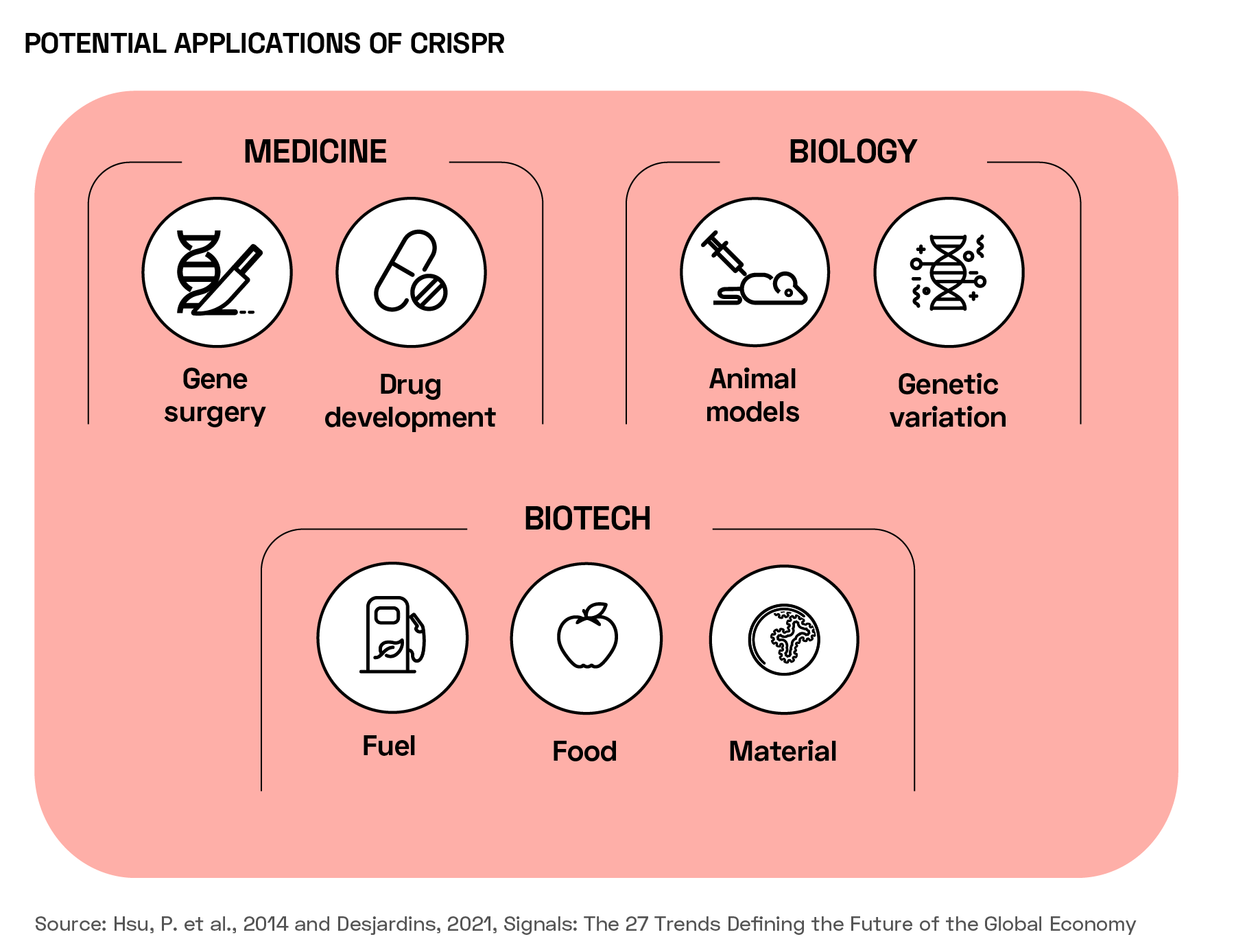Jeff Desjardins, Editor-in-Chief of Visual Capitalist, joins OPTO Sessions to discuss the profound and far-reaching potential of CRISPR and gene editing technology, which he believes could impact fields as diverse as oncology, agriculture and materials science.
On 8 December, the US Food and Drug Administration (FDA) approved two cell-based gene therapies for the treatment of sickle cell disease. The decision marked a watershed moment in the history of healthcare, being the first time that gene therapies have won FDA approval.
One of the treatments, Casgevy, is the result of a collaboration between CRISPR Therapeutics [CRSP] and Vertex Pharmaceuticals [VRTX]. The other, Lyfgenia, was developed by bluebird bio [BLUE].
In his recent OPTO Sessions appearance, Jeff Desjardins, Editor-in-Chief of Visual Capitalist and author of the book Signals: The 27 Trends Defining the Future of the Global Economy, makes the case that technological milestones are occurring exponentially faster than at any other time in history.
Gene therapies such as Casgevy and Lyfgenia are, for Desjardins, another manifestation of the rapid technological progression that the present era is witnessing.
What is CRISPR?
Desjardins explains that CRISPR technology is derived from a defence mechanism in the immune systems of bacteria and single-celled organisms.
“It’s a way for them to recognise viruses that have previously come into their cell,” he says. “CRISPR allows them to identify that DNA, then chop it and get rid of it.”
This naturally occurring bacterial mechanism has inspired the CRISPR gene editing procedure. “It allows us to go in and find a specific piece of DNA, chop out the parts that we don’t want, and put back in the part that we do want.”
This allows genes to be edited in various ways, from removing heritable genes that cause health disorders, to changing the characteristics of agricultural crops.
Could CRISPR Cure Cancer?
Treating sickle cell disease is one obvious use case for CRISPR technology. “It’s really great to see the first treatment come through and be approved by regulatory bodies,” he says, especially as this suggests that other treatments might be granted approval in future.
One of the major targets for future treatments is cancer — a far more widespread and life-threatening disease than sickle cell. Desjardins explains that there have been some “initial successes” in applying CRISPR technology to oncology in recent years. Many of these have been related to T-cells, “a type of white blood cell that is part of your defence mechanism”.
CRISPR can be used to make T-cells target cancerous cells. Desjardins explains that recent trial results have been positive. “Now, the question is obviously, how do you do that at scale, with many different people and many different types of cancers?”
There is a long way to go in terms of CRISPR’s applications within oncology, but given that approximately 10 million people die per year from cancer, the potential impacts in this space are huge.
CRISPR’s Scope
Nor are CRISPR’s applications necessarily limited to healthcare. “Obviously, we want people around the world to have nutritious, quality abundance in their food. Well, CRISPR is a way to get there.
“You can create super nutritious, delicious crops with as much abundance as possible. They can be resistant to pests. The potential applications are just so interesting.”
He believes that the technology could even be applied to materials science, “to create new materials that we’ve never created before”.
In Signals, Desjardins uses a two-factor system to assess any given trend: its ‘signal range’ and its ‘signal-to-noise’ ratio. The former denotes the scale of any signal’s impact; the latter, the degree of certainty around it.
CRISPR is “basically tops on both of these measures”, says Desjardins. In terms of its signal-to-noise ratio, Desjardins highlights that the price of gene sequencing fell faster than Moore’s law would have predicted.

“From a signal range perspective, it’s not just health or limiting disease. There are applications in agriculture, materials science, or any of these other areas. I think it’s safe to say that our lives are going to continue to be impacted by this technology in many different ways. In 10–20 years, it’s going to be hard to imagine the world without it.”
Continue reading for FREE
- Includes free newsletter updates, unsubscribe anytime. Privacy policy





